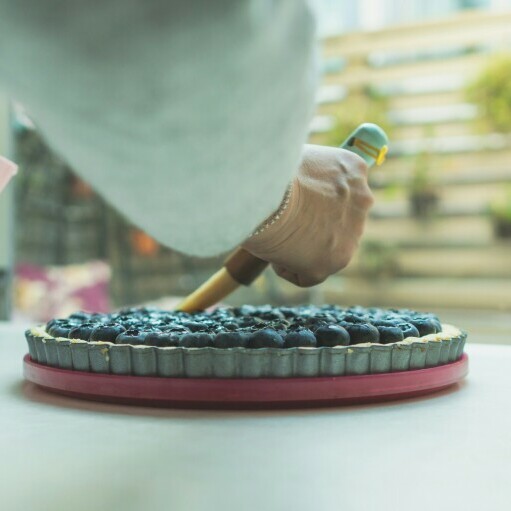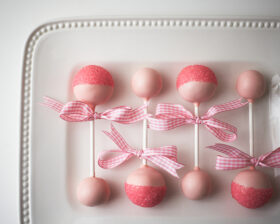I’m going to level with you: cake decorating isn’t just about slathering frosting on a sponge. It’s an art, a way to express creativity and bring joy to every celebration. The difference between a good cake and a great one often lies in its decoration. I’m here to help you with understanding how seasoned experts turn simple cakes into masterpieces, and how you can do the same.
Your journey into cake decorating starts with baking the perfect canvas – the cake itself. This might seem obvious, but the texture, flavor, and structural integrity of your cake will set the stage for all the decorating magic to follow. I’ve got some foolproof tips up my sleeve that’ll ensure your starting base is as reliable as it is delicious.
 Choosing the right tools is almost as crucial as the cake. You’re going to find out about the must-have instruments every cake artist keeps in their arsenal. We’re talking precision spatulas for getting those edges just right, turntables that make your life a breeze, and piping bags that are the painters’ brushes of the baking world.
Choosing the right tools is almost as crucial as the cake. You’re going to find out about the must-have instruments every cake artist keeps in their arsenal. We’re talking precision spatulas for getting those edges just right, turntables that make your life a breeze, and piping bags that are the painters’ brushes of the baking world.
Starting with simple designs is often the best approach. I’ll share insights on mastering basic techniques like smoothing your icing and creating simple yet stunning patterns. These foundational skills are essential, and they’ll give you the confidence to tackle more complex designs down the road. Plus, remember this: a truly skilled decorator knows that sometimes less is more.
And here’s the kicker: you don’t have to be a Michelangelo of fondant straight away. Bakers worth their salt will tell you, plenty comes from patience and practice. It’s not just about learning a method; it’s about refining it, understanding the subtleties, and getting to know your medium. Trust me, with time, you might surprise yourself with what you’re capable of.
Advanced Techniques That Elevate Your Cake Artistry
I’m going to dive into the techniques that can really take your cake decorating skills to the next level. When you’ve got the basics down and you’re ready to push the envelope, advanced techniques can transform your creations from simple to stunning.
Let’s start with fondant, a versatile medium that’s become a staple in modern cake design. I’ll guide you through the process of rolling out fondant smoothly to avoid any pesky air bubbles or wrinkles. Then, you’ll learn about molding and sculpting to add three-dimensional characters or intricate designs to your cakes.
Next up is the piping bag, your ally in precision and detail. You’re going to find out about the variety of nozzles and the designs they can produce, from delicate lacework to bold rosettes. The key here is to practice your pressure control – it’s the difference between blobs and beauty.
Adding textures and patterns doesn’t have to be complex. I’ll show you how stencils and impression mats can emboss designs onto your fondant with minimal fuss. These simple tools can produce eye-catching results that look like they took hours to create.
And if you’ve ever admired those stunning sugar flowers atop wedding cakes, you’re in luck. I’ll share insights from sugarcraft experts on creating lifelike blossoms and figurines. A little patience goes a long way, and before you know it, you’ll be piecing together petals like a pro.
Let’s not forget color. Don’t worry too much about sticking to traditional hues. I’ll explain color theory basics so you can choose a palette that complements your cake’s theme and makes your decorations stand out.
Now, keep in mind that with these advanced techniques, it’s not just about the end product; it’s also about the process. Enjoy the challenges and victories as your decorating repertoire expands. Your first attempt doesn’t need to be your last, so don’t focus too much on perfection.
Preserving the Sweetness: Maintenance and Hygiene Best Practices
You’ve worked hard on your cake design, with every swirl and flower placed just right. But what comes next is just as crucial – making sure your masterpiece stays both stunning and safe to eat. Let’s talk about keeping your cake as fresh as your ideas.
First up, you want your cake to taste as amazing as it looks. To do that, you need to know about proper storage. Cakes with buttercream or ganache can stay out for a short while, but anything cream-filled or perishable should hit the fridge. However, don’t just chuck it in; consider an airtight container to prevent drying out and absorbing unwanted fridge smells.
Now, I can’t stress enough how critical a clean workspace is. Sure, it’s about keeping things neat, but it’s more about safety. Always wash your hands, keep your tools pristine, and sanitize surfaces before starting. It might seem tedious, but trust me, it matters.
Speaking of tools, taking care of them is like looking after a good friend. Clean them thoroughly after each use and store them properly. This isn’t just about hygiene, it’s also about protecting your investment. Quality decorating tools can last a lifetime if treated right.
Cross-contamination is the party-crasher of cake decorating. Always use separate tools for different ingredients and allergens. And for those of you in the business, it’s paramount to label and separate edible decorations clearly for clients with dietary restrictions.
Lastly, consider drafting a decorating schedule if you’re handling multiple orders. It’s not just a time-saver; it helps ensure each cake gets the attention it deserves right up to delivery. Plan your workload to avoid rush jobs that can compromise both design and hygiene.
In conclusion, the art of cake decorating extends beyond the flourish of icing. It’s about a commitment to excellence, which includes the less glamorous, but equally important, hygienic practices. Spend time perfecting these final steps, and your cakes will always leave a lasting, and safe, impression.

